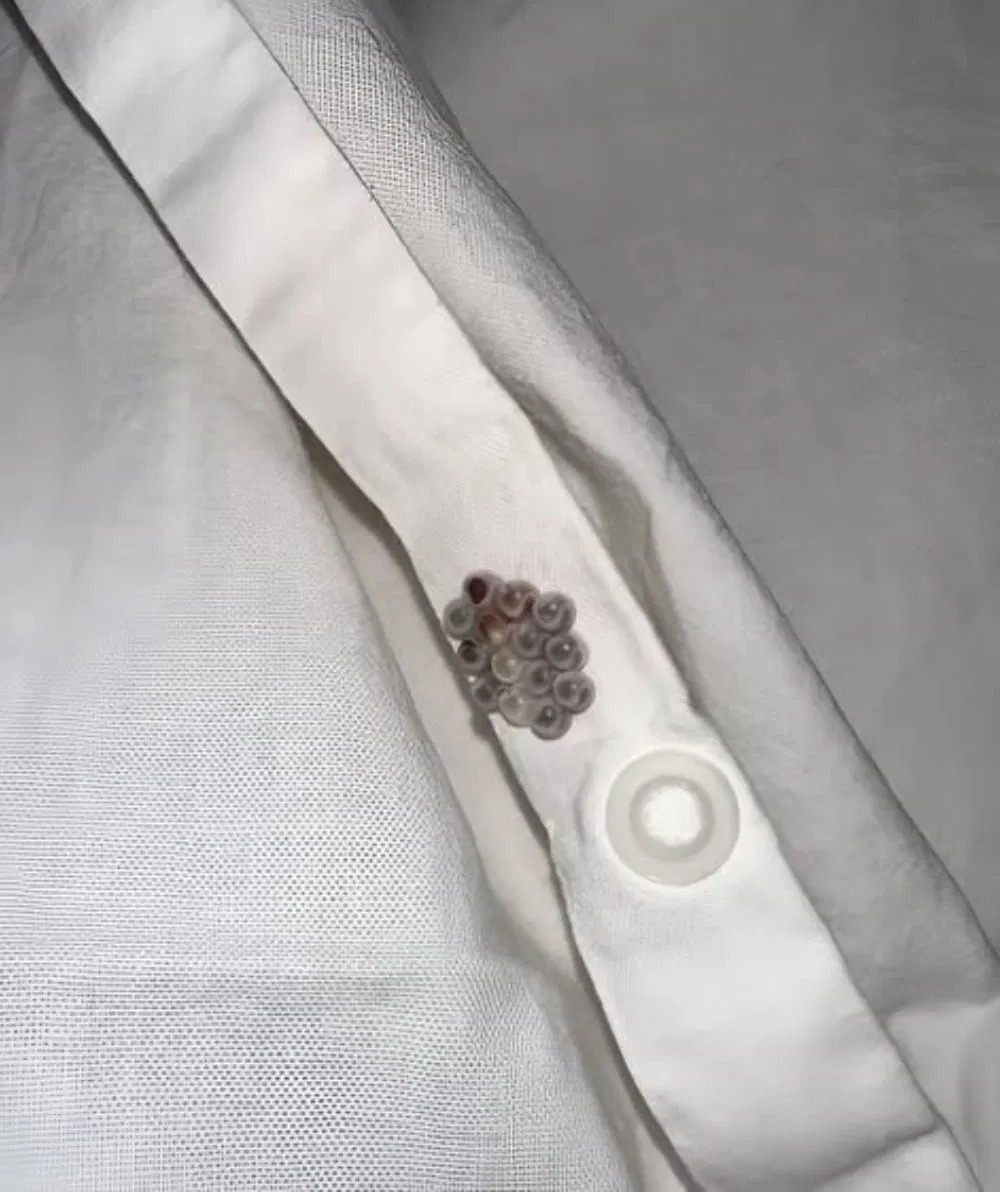What Those Mysterious Tiny Balls in Your Bed Could Mean—And Why You Shouldn’t Ignore Them
It started like any other morning. I woke up slowly, stretched, and stayed in bed for a few more peaceful minutes. But then I noticed something unusual—tiny, round balls on my bedsheet, right where I had been sleeping.
At first glance, they looked like harmless crumbs or maybe lint. But something felt off. They were smooth, symmetrical, and suspiciously well-placed—not the kind of random debris you’d expect to see after a night’s sleep. As I looked closer, my stomach sank.
“Are these insect eggs?” I thought.
That’s when panic started to kick in. I snapped a few photos, messaged friends, and began Googling frantically. After a short deep dive into pest identification websites and home cleaning forums, I found a disturbing possibility: stink bug eggs.
What Are Stink Bug Eggs Doing in My Bed?
My first reaction was disbelief. I keep my home spotless, especially my bedroom. Clean sheets, vacuumed floors, minimal clutter—everything in order. So how could I possibly have stink bug eggs in my bed?
Then it hit me—my dog. He loves rolling around in the grass during walks. Could he have unknowingly carried these eggs inside, tucked into his fur?
While the idea made sense, it was still alarming. Were they on the couch? The carpet? My clothes? I didn’t want to take any chances.
Taking Action—Fast
Before anything else, I made a doctor’s appointment. I had to be sure I hadn’t been bitten or exposed to something harmful. Thankfully, I got the all-clear. No bites, no infections, no allergic reactions—just a bizarre, creepy experience.
Still, this moment was a wake-up call: no matter how clean your home is, pests can and will find their way inside.
What Exactly Are Stink Bug Eggs?
Stink bug eggs are usually light-colored, barrel-shaped, and laid in clusters—typically on the underside of leaves. But they can be transferred into your home through unsuspecting sources like clothes, bags, pets, or even fresh produce.
A single female stink bug can lay hundreds of eggs throughout her lifetime. If you catch them early, like I did, you may avoid a full-blown infestation. But if they hatch, the young bugs—called nymphs—start wandering in search of food, spreading across your home.
Why Stink Bugs Are a Problem
At first glance, stink bugs don’t seem all that menacing. They don’t bite, sting, or spread disease. But they’re far from harmless:
- They Smell Terrible: When crushed or threatened, stink bugs release a strong odor that can linger in your home.
- They Multiply Quickly: Infestations can go from mild to overwhelming in just weeks.
- They Damage Plants: These pests feed on fruit and vegetables—indoors and out.
- They Invade Living Spaces: Once inside, they’re hard to remove without professional help.
How to Keep Stink Bugs Out of Your Bed—and Your Life
If you’ve ever dealt with a stink bug—or found something suspicious in your bed—follow these proactive steps to prevent future visits.
1. Seal Every Entry Point
Inspect doors, windows, baseboards, and vents for cracks or gaps. Use caulk or weatherstripping to seal them up. Damaged screens? Replace them immediately.
2. Keep Outdoor Lights Dim
Stink bugs are attracted to bright porch lights. Try switching to yellow “bug” bulbs or simply turn off unnecessary outdoor lights after dark.
3. Clean Regularly
Vacuum often—especially near windows, under furniture, and behind curtains. Even small crumbs or standing water can attract bugs.
4. Tidy the Outdoors
Keep the outside of your house clean too. Trim overgrown plants near doors and windows. Move firewood and compost piles far from the house. Stink bugs love shady, damp hiding spots.
5. Install Screens on Chimneys and Vents
Use fine mesh screens to block vents, attic fans, and chimneys. These are common entry points for insects seeking warmth during colder months.
6. Use Natural Repellents
Mix water with a few drops of peppermint or eucalyptus essential oil and spray along windowsills, door frames, and bed frames. Stink bugs hate strong smells.
For a DIY deterrent:
- 2 cups of water
- 4 teaspoons garlic powder
Spray in suspected entry points for a natural barrier.
7. Inspect Pets and Items Coming Inside
Check your dog’s fur and your own clothing after outdoor activities. Shake out bags, blankets, and anything you’ve left outside before bringing it in.
8. Set Light Traps (Only If Needed)
If you notice stink bugs inside, you can use indoor light traps. Just avoid squashing them—they’ll release their signature smell and could attract more.
9. Dispose Properly
Use a vacuum cleaner with a disposable bag to suck up visible bugs and eggs, then dispose of the bag outside immediately. Another method? Trap them in a jar and freeze them for 24 hours before throwing away.
10. Call the Pros
If you’re seeing more than just a few stink bugs, it might be time to bring in a pest control expert. They can treat your home safely and thoroughly.
Final Thoughts: It Can Happen to Anyone
The truth is, I never imagined I’d be Googling “tiny white balls in bed” while clutching my phone in horror. But I’m glad I acted quickly. I dodged a much bigger infestation by paying attention to something small and seemingly harmless.
So the next time you spot something strange in your bed—don’t ignore it. It might just be lint. Or, it might be a pest problem waiting to happen.
Better safe than sorry.

